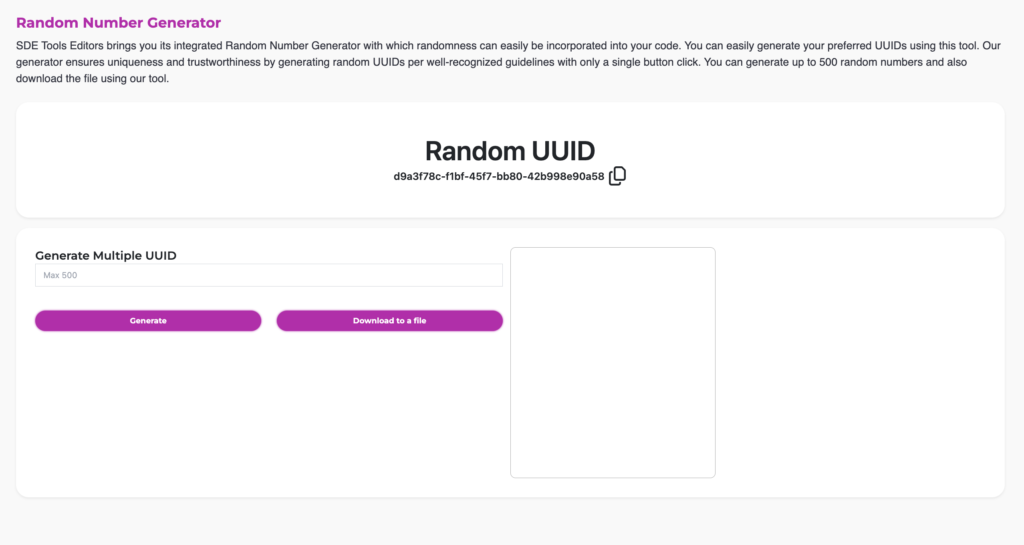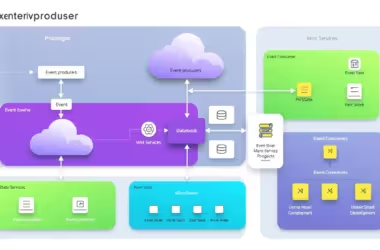Amazon, the e-commerce giant, processes billions of deliveries every year. With such a large volume of shipments, generating unique shipping labels is crucial to ensure efficient and accurate package tracking. Amazon achieves this by leveraging Universally Unique Identifiers (UUIDs) to create distinctive shipping labels for each package. In this blog post, we’ll delve into how Amazon utilizes UUIDs to generate unique shipping labels, ensuring seamless package delivery.
What are UUIDs?
UUIDs (Universally Unique Identifiers) are 128-bit alphanumeric strings that uniquely identify resources, such as packages in Amazon’s case. They are designed to be globally unique, meaning no two UUIDs are alike, making them ideal for identifying vast numbers of items. UUIDs consist of five sections, separated by hyphens, and are typically represented in the following format: xxxxxxxx-xxxx-xxxx-xxxx-xxxxxxxxxxxx.
UUIDs are generated using algorithms that ensure their uniqueness. There are different types of UUIDs, including:
- Version 1 (Date-time based): Generated based on the timestamp and the machine’s MAC address.
- Version 4 (Random): Generated using random numbers.
- Version 5 (SHA-1 hash based): Generated using a SHA-1 hash of a namespace identifier and a string.
Amazon’s Use of UUIDs for Shipping Labels
When a customer places an order on Amazon, the company’s system generates a unique UUID for each package. This UUID is then used to create a shipping label that contains essential information, such as:
- Package identifier (UUID)
- Shipping carrier information
- Package weight and dimensions
- Destination address
- Barcode for tracking
The UUID serves as a unique identifier for the package, allowing Amazon to track and manage the shipment efficiently. By using UUIDs, Amazon can generate an immense number of unique shipping labels without worrying about duplicates or conflicts.
Benefits of Using UUIDs for Shipping Labels
Amazon’s use of UUIDs for shipping labels offers several advantages:
- Uniqueness: UUIDs ensure that each package has a distinct identifier, eliminating the possibility of duplicate labels.
- Scalability: UUIDs can be generated in vast quantities, making them ideal for Amazon’s massive shipment volume.
- Efficient tracking: UUIDs enable Amazon to track packages accurately, reducing errors and misdeliveries.
- Flexibility: UUIDs can be used across various shipping carriers and platforms, making them a versatile solution.
How Amazon Generates UUIDs
Amazon uses a combination of algorithms and tools to generate UUIDs for shipping labels. While the exact implementation details are not publicly disclosed, it’s likely that Amazon employs a variant of the widely used UUID version 4 (random) algorithm. This algorithm generates UUIDs based on random numbers, ensuring uniqueness and unpredictability.
Amazon may also use additional techniques to ensure the uniqueness and security of their UUIDs, such as:
- Using a cryptographically secure pseudorandom number generator (CSPRNG) to generate random numbers.
- Employing a namespace identifier to ensure uniqueness across different systems.
- Utilizing a hash function to generate a fixed-length string from a variable-length input.
Conclusion
In conclusion, Amazon’s use of UUIDs to generate unique shipping labels is a testament to the power of this technology. By leveraging UUIDs, Amazon can efficiently manage billions of deliveries each year, ensuring accurate and timely package tracking. As the e-commerce industry continues to grow, the use of UUIDs will become even more critical for companies like Amazon, enabling them to scale their operations while maintaining exceptional customer service.
By understanding how Amazon utilizes UUIDs, businesses can learn from this approach and apply similar strategies to their own operations, ultimately improving their efficiency and customer satisfaction.
Bonus: Generating UUIDs for Your Own Project
If you want to generate UUIDs for your own project, you can use various tools and libraries depending on your programming language and platform. Here are some examples:
Python
Python
import uuid
my_uuid = uuid.uuid4()
print(my_uuid)JavaScript
JavaScript
const uuid = require('uuid');
const myUuid = uuid.v4();
console.log(myUuid);Java
Java
import java.util.UUID;
UUID myUuid = UUID.randomUUID();
System.out.println(myUuid);C#
C#
using System.Guid;
Guid myUuid = Guid.NewGuid();
Console.WriteLine(myUuid);Command Line (UUID Tools)
Bash
$ uuidgen
xxxxxxxx-xxxx-xxxx-xxxx-xxxxxxxxxxxxOnline UUID Generator
SDETools UUID generator provides a flexible way to generate a single or bulk UUID.

These examples demonstrate how to generate a UUID using popular programming languages and a command-line tool. You can use these UUIDs for various purposes, such as identifying users, sessions, or objects in your application.
Remember to use a suitable UUID version (e.g., version 4 for random UUIDs) and library or tool that suits your project’s requirements.






